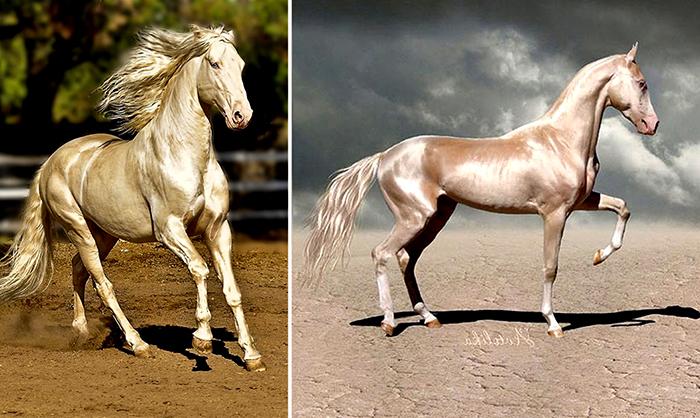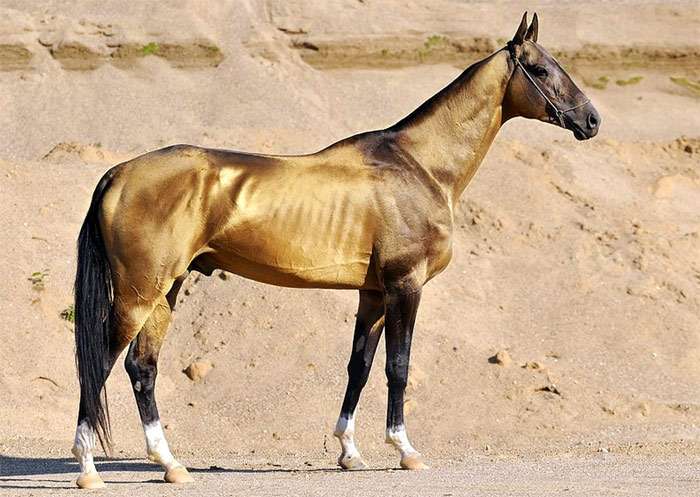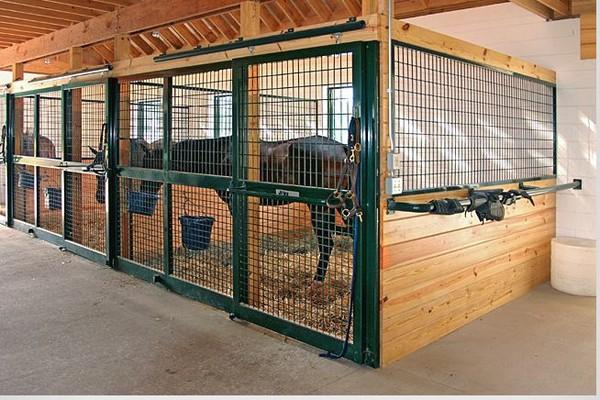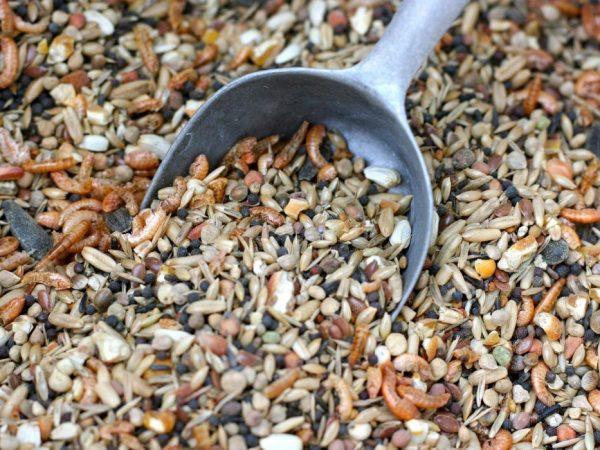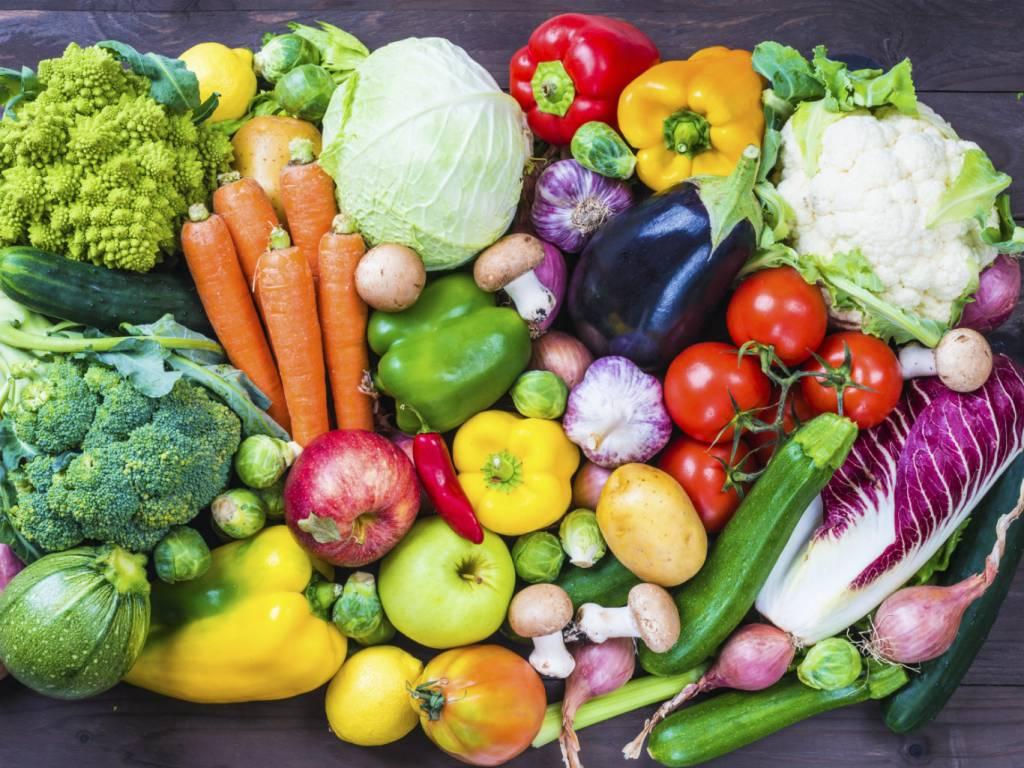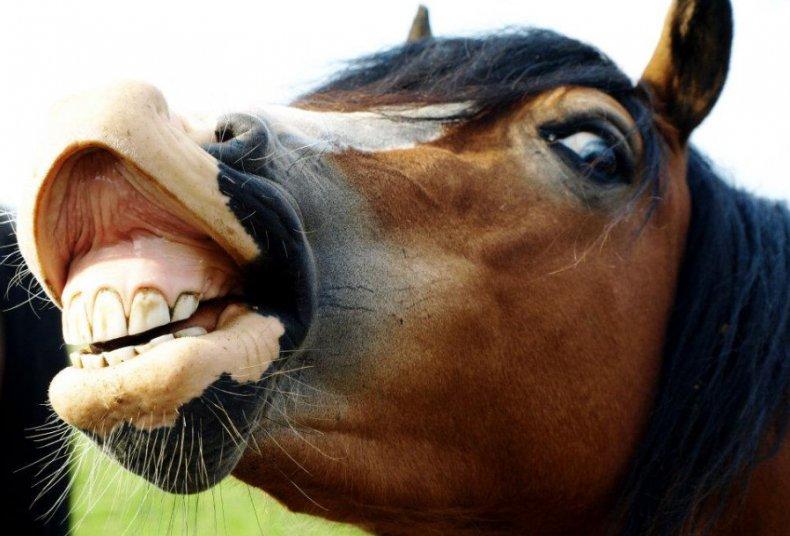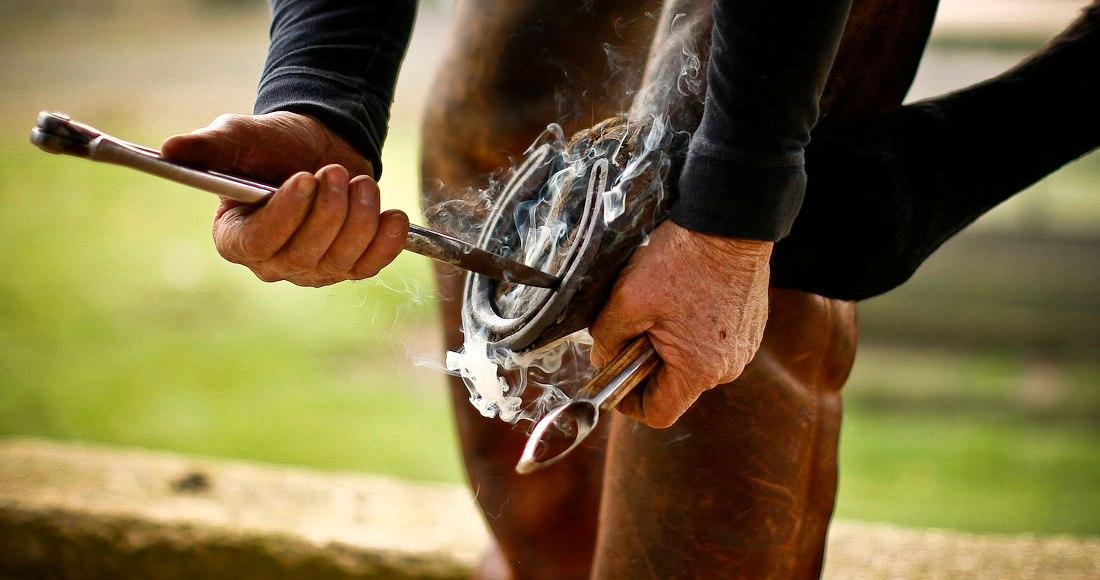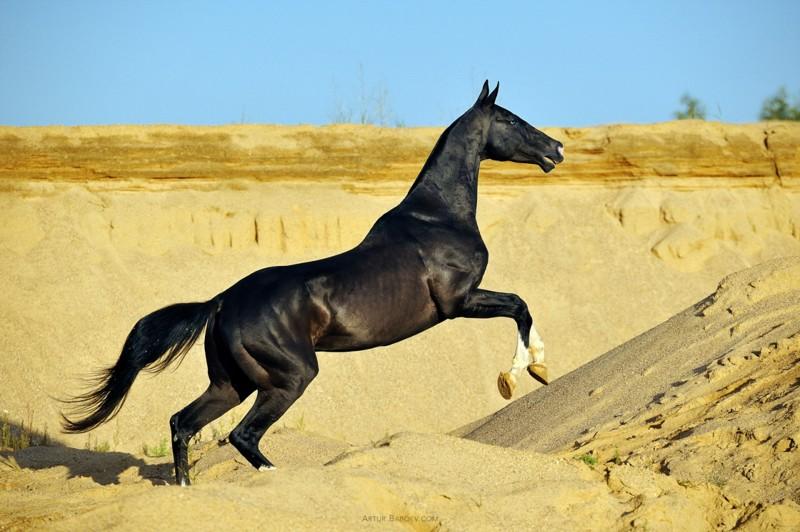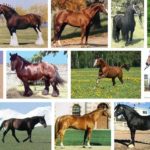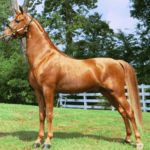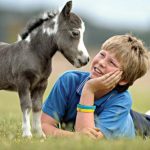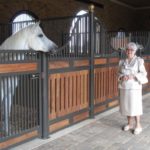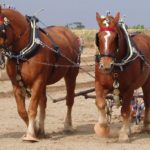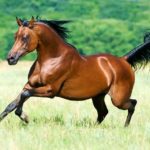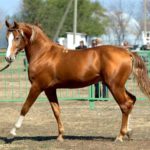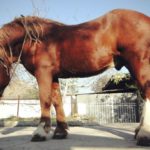One of the most ancient breeds of horses was bred by Turkmen nomads more than 5000 BC. e. Akhal-Teke horses make an indelible impression on any person at first sight. Inimitable stature and color are combined with an ardent disposition, intelligence and pride. At the same time, these are hardy and playful horses, reliable friends, loyal until the end of their lives.
- History of origin
- Advantages and disadvantages of the breed
- Description of the Akhal-Teke horse
- Exterior
- Varieties and suits
- Temperament and learning ability
- What are the characteristics of Isabella horses?
- Use of Akhal-Teke horses
- Basic content rules
- Arrangement of the stables
- Feeding and watering
- Basic diet
- Nutritional supplements
- Bathing
- Dental care
- Grazing
- Horseshoe
- Disease Prevention Measures
- Breeding
- Interesting facts about the breed
- Price - how much does it cost
History of origin
The Akhal-Teke breed was developed in the regions of Central Asia where the Great Silk Road passed. In desert conditions, hardy horses were needed to accompany caravans. The name of the breed was determined in the 18th century. It was based on the names of an oasis in Turkmenistan (Ahal) and the tribe that lived there (Teke). The priority of Turkmenistan is explained by the preservation of the number of purebred horses, breeding and the special, reverent attitude of people towards horses.
Advantages and disadvantages of the breed
Akhal-Teke horses are a combination of grace, strength and endurance. A proud and intelligent horse demands respect and does not forgive insults. She becomes very attached to her owner and may not accept a change of owner. Horses are not picky about feed, but do need careful care.
Physical development in horses of the Akhal-Teke breed ends by 4-6 years, which increases the cost of their maintenance.
Description of the Akhal-Teke horse
Horses of this breed, once seen, cannot be confused with others. The purity of the blood, preserved over thousands of years, was expressed in the characteristic features of the exterior. An Akhal-Teke stallion reaches 160-170 centimeters at the withers, a mare – 150-160 centimeters. If you compare it with animals of other species, it resembles a cheetah: just as light, fast, and beautiful. Akhal-Teke horses are playful and jumping, and can go without water or food for a long time.
Exterior
Characteristic features of the Akhal-Teke horse’s exterior:
- Dry head with a small hump in the bridge of the nose. The ears are widely spaced, thin, mobile. The eyes are large, with an “Asian” slant. Wide nostrils.
- The neck is long. The mane and bangs are made of soft, short hair.
- The chest is narrow and muscular.
- The stomach is retracted, the ribs are straight.
- The back is straight and long.
- The croup is sloping.
- The tail is set low and thin.
- The legs are slender and long.
- The hooves are small and hard.
- The skin is thin, with translucent blood vessels.
The absence of a mane is found only in the Akhal-Teke breed.
Varieties and suits
There are three varieties within the breed:
- Tall, with ideal body proportions.
- Medium height, with average proportional indicators.
- Short, strong in build.
Among the Akhal-Teke horses there are horses of various colors (in proportions of the total number of livestock):
- bay (2/5);
- dunka (1/5);
- black (1/8);
- red (1/8);
- sulfur (1/25);
- nightingale (1/20);
- isabella (1/50).
All colors are characterized by a short undercoat of golden or silver color. It gives the main color a shine that changes depending on the brightness of the lighting.
Temperament and learning ability
Akhal-Teke horses are not known for being trusting of strangers. The peculiarities of the formation of the breed developed pride and independence in them. The Akhal-Teke dog only recognizes its owner and does not make contact with other people. Such affection has been artificially cultivated in animals for thousands of years.
Among the Akhal-Teke there are excitable, nervous and hot individuals. Coercion by force is met by stubbornness and refusal to carry out orders. But the horse does not show aggression towards humans.
Before you begin training, you need to build trust. This will require time and an understanding of the psychology of the Akhal-Teke horse. If the horse recognizes the trainer, then training will not require effort. Akhal-Teke horses, having a good memory, learn easily and willingly.
What are the characteristics of Isabella horses?
Isabella color resembles the color of baked milk.Akhal-Teke dogs of this color have pink skin and cream-colored hair. In the sun, Akhal-Teke horses of Isabella color seem cast from gold. In addition to their rare coloration, they have bright blue or green eyes.
Breeders explain the appearance of horses of this color as a hidden form of albinism. This is confirmed by the predisposition Isabella horses to eye and skin diseases, which is typical for albinos. Akhal-Teke horses with this color are more difficult to adapt to the conditions of the Turkmen desert.
Use of Akhal-Teke horses
Akhal-Teke horses were bred for riding. They show excellent results in show jumping competitions and long races. In terms of length and height jumping, Akhal-Teke horses have no equal among other breeds. World records in height (2.20 meters) and length (9 meters) were set by Akhal-Teke horses.
Obedient and trained Akhal-Teke horses amaze judges and spectators at dressage competitions with their grace and precision of movements. For the same reason, Akhal-Teke horses are used for circus performances.
Basic content rules
To maintain the health of Akhal-Teke horses, it is necessary to fulfill the requirements for their maintenance.
The list of necessary conditions includes:
- Feeding in accordance with the animal's physical activity.
- Daily cleaning.
- Water procedures 3 times a week.
- Check the hooves once a month.
- Dental examination twice a year.
- Daily walk in the fresh air with physical activity.
To clean horses use:
- natural hair brushes (hard and soft);
- wooden comb;
- sponges (for the muzzle and buttocks);
- velvet/cloth;
- rags for washing hooves;
- hook for cleaning hooves.
The cleaning procedure begins from the head, moving to the shoulders, withers, back and legs.For wool, use a stiff brush. In places where the bones are not protected by muscles, clean with a soft brush. Then moisten the tail and mane with water and comb it with a comb. Use a hook to clean the hooves and wipe with a wet rag. Wipe the muzzle near the eyes and nostrils with a damp sponge. The skin under the tail is treated with another sponge. Rub the entire horse with a slightly damp velvet mitten.
Arrangement of the stables
The stable is located outside the city, away from the highway. Animals are kept in wooden structures with good ventilation and lighting (natural + artificial). A heated floor is installed in the stalls: a straw bedding with a thickness of at least 10 centimeters is laid on a concrete-clay base. Feeders are placed across the entire width of the stall with a tray depth of 40 centimeters.
Feeding and watering
It is recommended to feed the horse at certain hours, which stimulates the secretion of gastric juice and better absorption of feed. The drinking regime is similar to other horse breeds: water is given before feeding. Daily fluid volume varies depending on the time of year. In hot weather, a horse needs 60-70 liters of water, in cold weather - 35-40 liters. The water should be fresh, clean, with a temperature of +10...+15 degrees.
Physical activity is not allowed half an hour before and after feeding. A sweaty horse is given water after it has cooled down. The diet is determined based on physical activity. In the old days, the Turkmen supported their horses with camel milk, flatbreads with lamb fat, and eggs.
Basic diet
The basis of nutrition for Akhal-Teke horses is:
- roughage;
- green food;
- concentrates.
Roughage:
- hay;
- straw;
- chaff of spring wheat, barley.
Green food - fresh grass. Concentrated feed includes cereals and silage.
Grain crops in the diet of Akhal-Teke horses:
- wheat;
- barley;
- oats;
- corn.
Silage is made from green mass of corn or sunflower. The daily diet takes into account the energy expenditure of the animal. On days when the horse is walked with light jogging, he is given forage (roughage and green feed) without concentrates. During long, slow riding, the percentage of forage is reduced to 70%, replacing it with concentrate. During training in show jumping, dressage, and harness riding, the percentage of concentrates is increased to 40%.
In show jumping and dressage competitions, forage and grain constitute equal amounts. In eventing, the horse needs more energy and receives 60% grain and 40% forage. Akhal-Teke horses participating in racing are fed mainly with concentrated feed (70%).
During feeding, the animal is first fed roughage, then green. The daily intake of roughage is divided into 4 parts: one in the morning and afternoon, two at night.
Nutritional supplements
Horses are given succulent feed (vegetables, fruits) last. Vitamins are introduced into complementary foods as needed.
Bathing
The Akhal-Teke, with its mobile nervous system, benefits from water procedures. Water invigorates the animal, affects mood and appetite. Washing is carried out once every 2 days. In summer, the horse is bathed in a pond (natural/artificial). The rest of the year, douse with a hose or bucket. The reservoir must have a sandy or gravel bottom without silting.
Water temperature is within +20 degrees. The water procedure lasts 20 minutes. At the end of it, excess water is removed with the palm of your hand or a scraper. Drying of the skin and hair occurs in the air. The animal is walked at a slow pace for 20 minutes until it dries in the sun.The horse is gradually accustomed to washing with a hose and bucket so that the water under pressure does not frighten him.
Dental care
With age, the Akhal-Teke's chewing teeth begin to deteriorate, causing pain when chewing. The older the animal, the more often its teeth should be examined. If toothache is suspected, the horse is taken to a specialist.
Signs of dental problems are constant tension in the back muscles, poor appetite, and causeless restlessness of the animal: the horse often rears.
Grazing
The fenced paddock should be located next to the stable. Akhal-Teke horses are walked twice a day, if there is no training - for at least half an hour.
Horseshoe
Horses participating in horse racing and show jumping are shod with special horseshoes that have an orthopedic effect. This protects the animal from injury to its legs. In other cases, universal horseshoes are used.
Disease Prevention Measures
Starting from a certain age, Akhal-Teke horses, like horses of other breeds, are vaccinated against tetanus, rabies, and influenza. They check for glanders twice a year. To avoid digestive problems, use high-quality and fresh food.
Breeding
Puberty in Akhal-Teke horses ends by 2 years. But for breeding animals are attracted at the age of 4-5 years. Insemination of mares in heat is carried out artificially. The stallion is selected in advance so that the foal is born of the desired color.
The mare's pregnancy lasts 11 months. One, rarely two foals are born. After 5 hours, newborns stand on their feet and can follow their mother. For the first six months, the foal is fed by a mare. Then he is gradually transferred to plant foods.Until the middle of the last century, stud farms for breeding Akhal-Teke horses were located in Turkmenistan. Currently, breeding work is carried out in the Russian Federation and Kazakhstan.
Interesting facts about the breed
There are 3,000 purebred Akhal-Teke horses in the world. Half of them are located in Turkmenistan. Turkmens consider Akhal-Teke horses to be their national treasure, the brand of the country. The horse is depicted on the coat of arms, the banknote of the national currency. A national holiday is held in her honor - an annual race, in which only Akhal-Teke horses can take part.
In past centuries, the rulers of the country could afford to keep Akhal-Teke horses in herds. Turkmen nomads kept 1-2 horses, which were constantly near their homes on a long lasso. Foals were taken into a tent during the cold season. Stall housing has formed the relationship between man and horse as equal partners with complete trust in each other.
In the old days, among the Turkmens, the first place in importance was the father, then the guest. The horse took third place, he was more important than his wife, children and other relatives. Akhal-Teke horses lived to a ripe old age without learning what a whip was. Due to the illiteracy of the population, the pedigree of each horse was transmitted orally. Information for the stud book was accumulated by the middle of the 20th century.
Akhal-Teke Absinthe at the Olympic Games in Rome (1960) became a world sensation. With his dressage performance, he captivated the audience with the beauty of his appearance, impeccable execution of commands, demonstrating the fusion of rider and horse.
Price - how much does it cost
The cost of Akhal-Teke horses at international auctions varies from hundreds of thousands to millions of dollars per horse. Isabella horses are especially highly valued.

